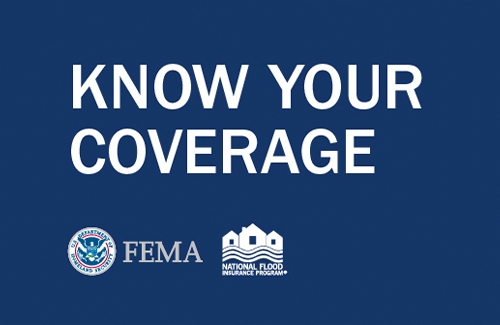Many residents underestimate their flood risk and overestimate the amount of federal funding they will receive, leading them to believe they can rely solely on disaster assistance for recovery after a flood. As a result, they may be unprepared to handle the financial burden of a flooding event. Federal disaster assistance is NOT a guarantee. Flood insurance is the best form of financial mitigation and preparedness to protect the lives they have built.
Below are five key talking points comparing disaster assistance and flood insurance you can use when talking to your clients and prospects.
- Disaster Declarations: FEMA disaster assistance requires a Major Disaster Declaration from the President to authorize funding, which can be a lengthy and complicated process. Flood insurance does not require a disaster declaration, so individuals with insurance can make a claim almost immediately after a flood event.
- Coverage: Both disaster assistance and flood insurance cover flood damage to your primary residence. That said, disaster assistance is designed to make a home “safe, sanitary, and fit to occupy,” not to restore it to pre-disaster condition. Disaster assistance can provide funding for additional expenses like vehicle repairs, temporary housing, or medical fees, which insurance does not cover. Flood insurance offers customizable building and contents coverage to meet your clients’ needs.
- Payout: Disaster assistance often comes in the form of a Small Business Administration (SBA) loan or FEMA disaster grant, which averages about $5,000 per household. By comparison, the average flood insurance claim payment over the past 5 years was approximately $69,000. Flood insurance from the NFIP will never need to be repaid, but certain forms of federal assistance, like SBA loans, must be repaid with interest.
- Duplicative Expenses: Your clients can apply for disaster assistance and file a flood insurance claim for a single flood event, but they cannot receive funding from both to cover the same damage cost. For example, if their flood insurance company provided money for home repairs, they could still receive FEMA disaster assistance to cover another expense like vehicle damage.
- Future Flooding: If your clients do receive disaster assistance after a flood, they will be required to purchase and maintain a flood insurance policy going forward to receive aid for any future flooding events.
Ultimately, you want your clients to receive the maximum amount available to fully recover after a flood, and flood insurance significantly mitigates their financial burden. Encourage your clients and potential clients to visit FloodSmart.gov to learn more about the benefits of flood insurance.

